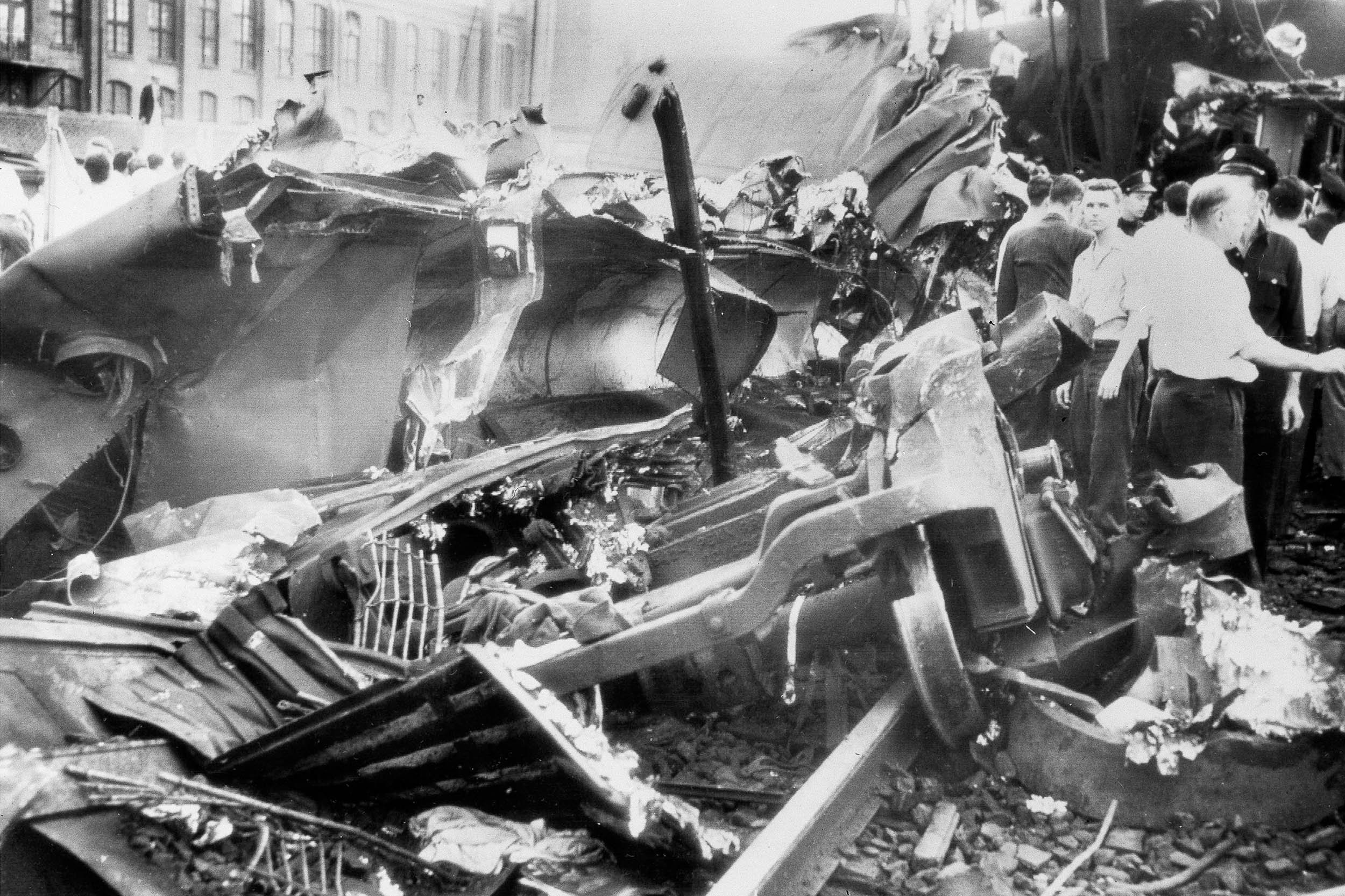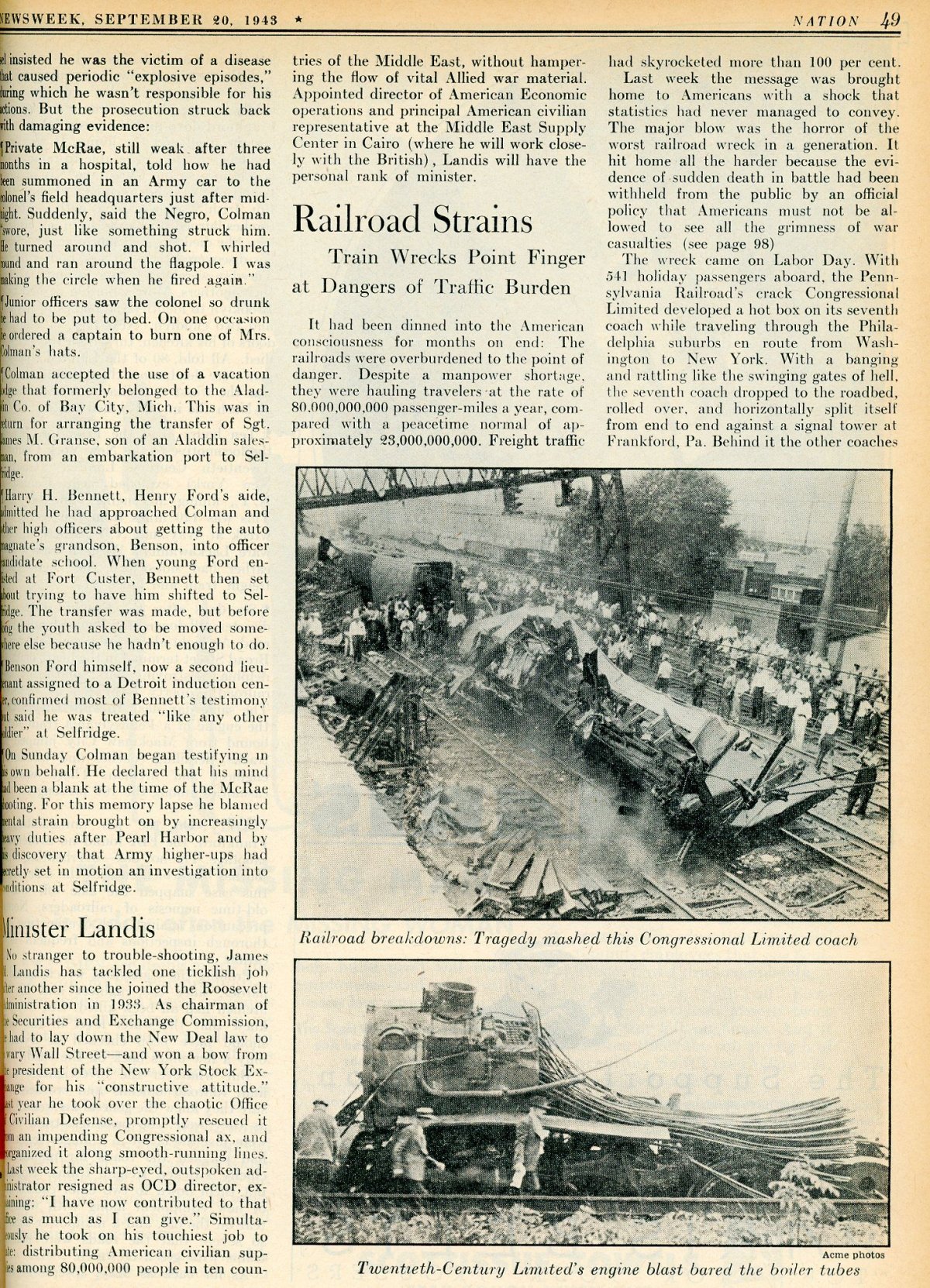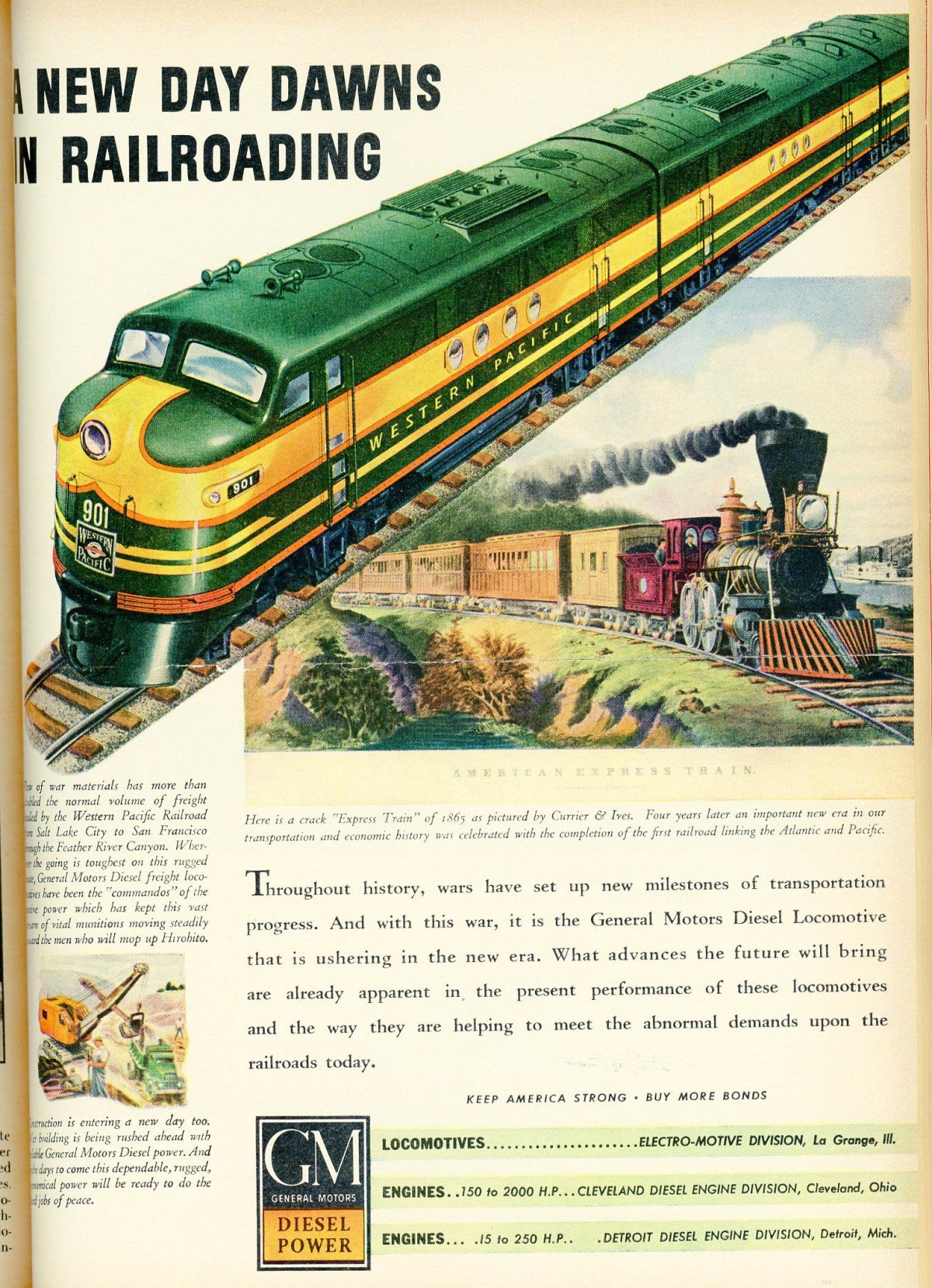
It was a fatal train crash that "transformed the Washington-to-New York express into a mess of tattered metal as it headed into a curve last night." This may sound like a description of the rail accident that occurred near Philadelphia on May 12 and killed six people. But the quote, taken from the Chicago Tribune in 1943, actually refers to a train wreck some seven decades prior—in nearly the exact same spot.
On Labor Day of that year, a Pennsylvania Railroad Congressional Limited train with 16 or 18 cars traveling from Washington, D.C., to New York City derailed after the box holding the axle overheated on one of the cars, causing the axle to break. Some 80 people died in the accident, prompting Newsweek to call it "the worst railroad wreck in a generation."
"With a banging and rattling like the swinging gates of hell, the seventh coach dropped to the roadbed, rolled over and horizontally split itself from end to end against a signal tower," Newsweek wrote.
Albert Churella, author of The Pennsylvania Railroad, Volume 1 and a professor at Kennesaw State University, says the 1943 crash "ranks about number 10 or 15 on the list of the worst crashes."
Chris Baer, an assistant curator at the Hagley Museum and Library, agrees: "It was probably one of the more severe disasters of this kind that would have taken place, especially at this time in the 20th century."

The 1943 accident occurred at Frankford Junction, which Baer describes as a Civil War–era beltway-like stretch of rail that circumvents central Philadelphia and connects two rail lines. The May 12 derailment happened along the same curve.
Reports from 1943 blamed World War II for a series of train crashes, including the one at Frankford Junction. More people were traveling and new equipment was less available.
"The railroads were under a tremendous amount of stress across the county, and when you have that kind of volume moving on a railroad, even like the Pennsylvania Railroad, which was designed for high traffic in that area, you have higher risk," says Robert Holzweiss, president of the Railway and Locomotive Historical Society.
In an unfortunate coincidence, alongside Newsweek's 1943 crash coverage is an advertisement for General Motors Diesel Locomotive. "A new day dawns in railroading," it says.

The Pennsylvania Railroad was founded in 1846 and merged with the New York Central Railroad in 1968, and it went bankrupt shortly thereafter. A portion of its rails eventually moved to Amtrak.
Churella says the junction was built in the 1860s, at a time when railroad construction was critical to the Civil War, especially linking cities to Washington. But it was constructed along a curve because years earlier, locals in Philadelphia had complained about the idea of a train line running through their streets, saying it would be a safety hazard and a noisy intrusion.
Baer, from the Hagley museum, says there has since been an effort to reduce the sharpness at that junction. The ongoing investigation into the May 12 derailment may shed light on whether the curving nature of that rail line played a role in causing the tragedy.
Uncommon Knowledge
Newsweek is committed to challenging conventional wisdom and finding connections in the search for common ground.
Newsweek is committed to challenging conventional wisdom and finding connections in the search for common ground.
About the writer
Max Kutner is a senior writer at Newsweek, where he covers politics and general interest news. He specializes in stories ... Read more
To read how Newsweek uses AI as a newsroom tool, Click here.








